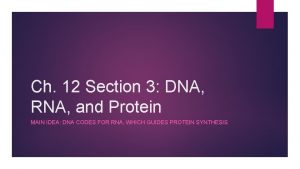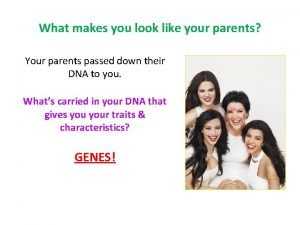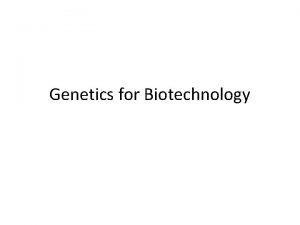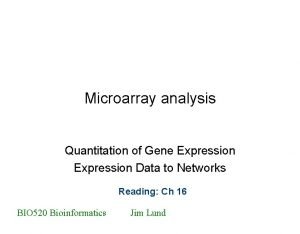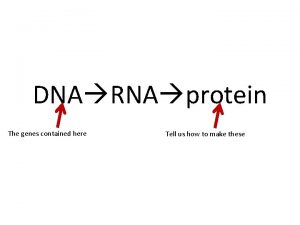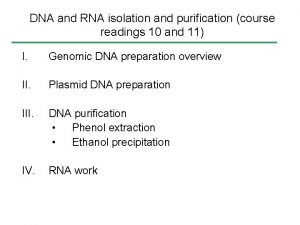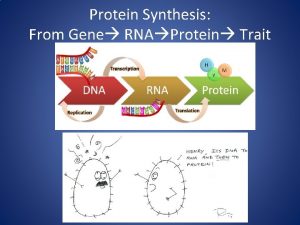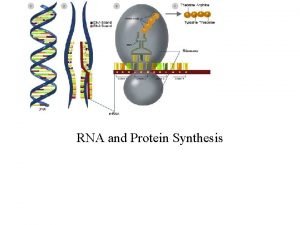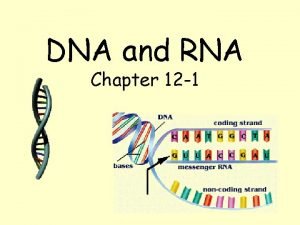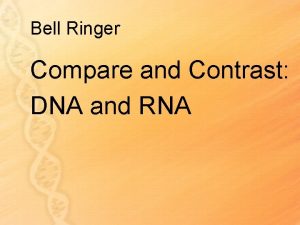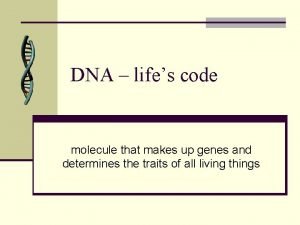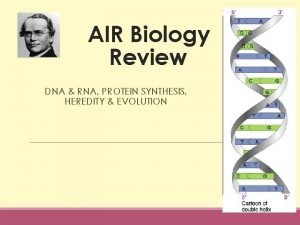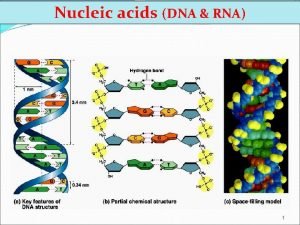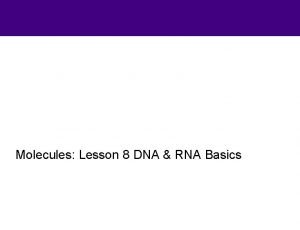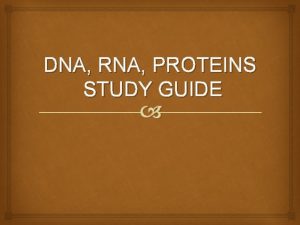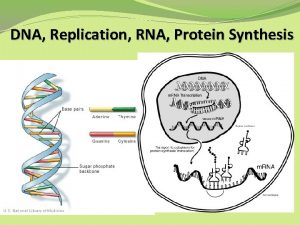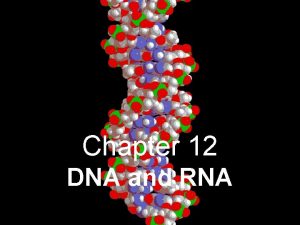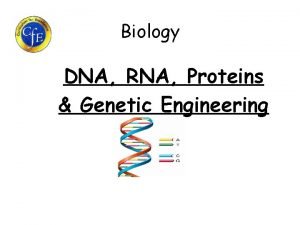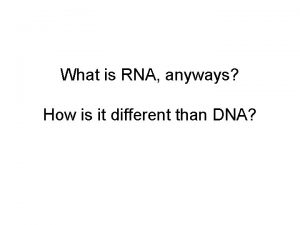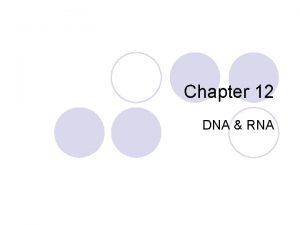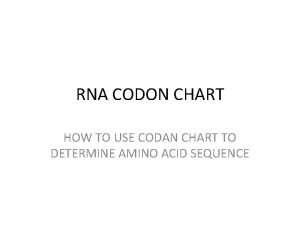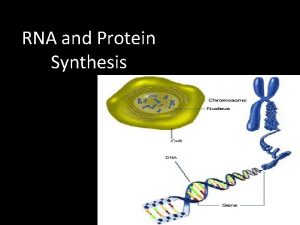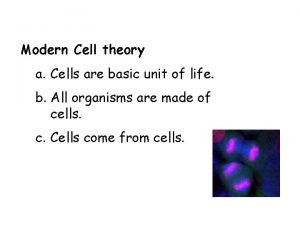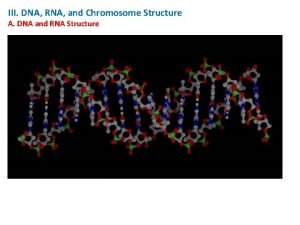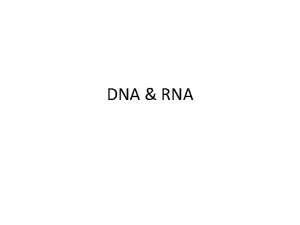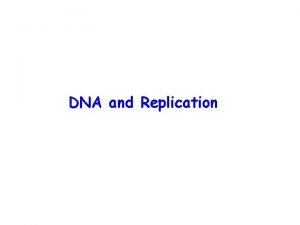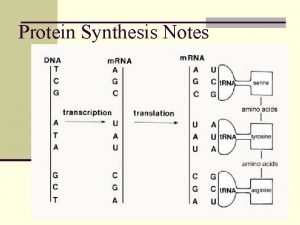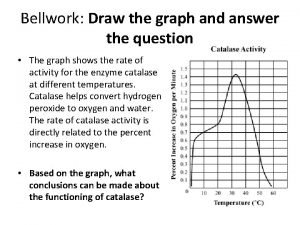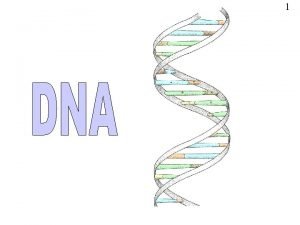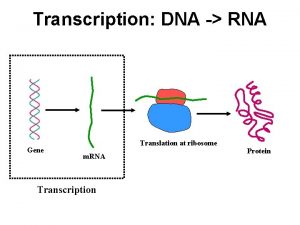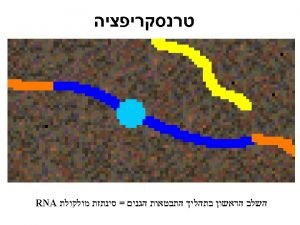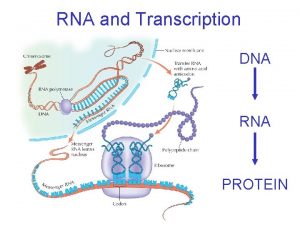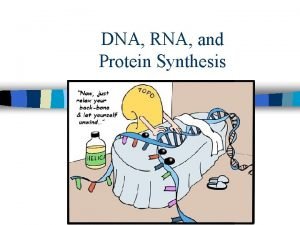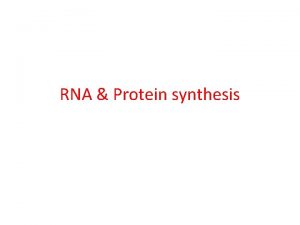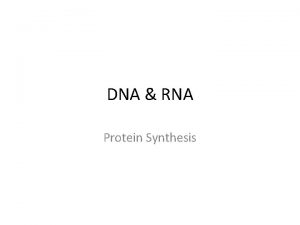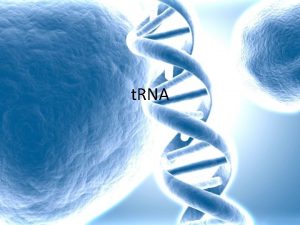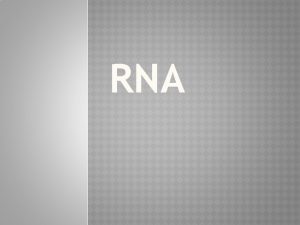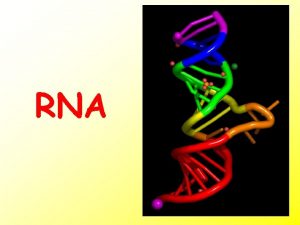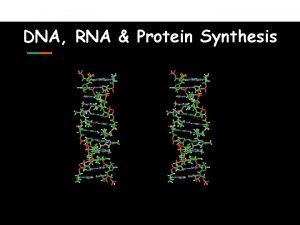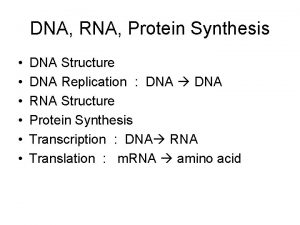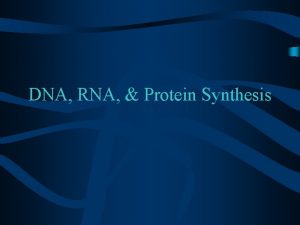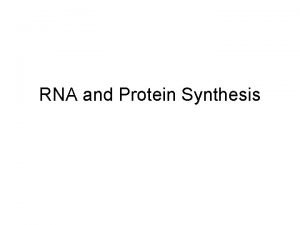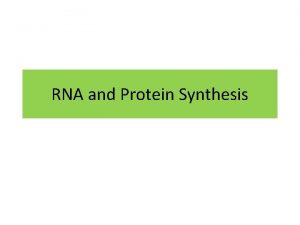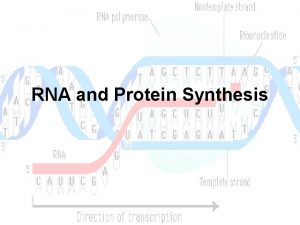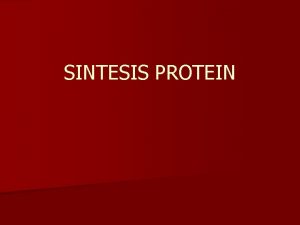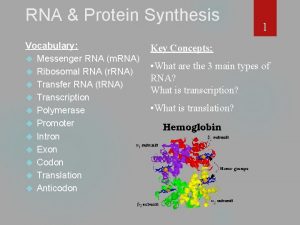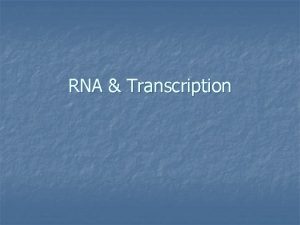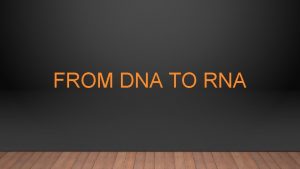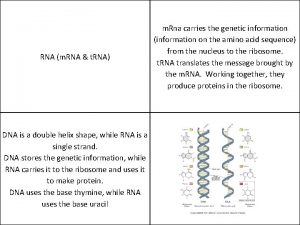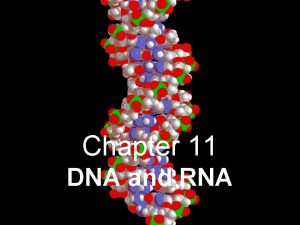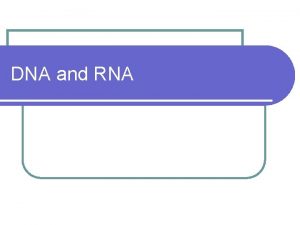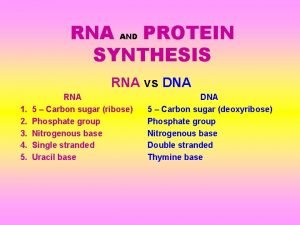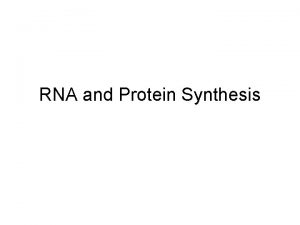Ch 12 Section 3 DNA RNA and Protein








































- Slides: 40

Ch. 12 Section 3: DNA, RNA, and Protein MAIN IDEA: DNA CODES FOR RNA, WHICH GUIDES PROTEIN SYNTHESIS

The Central Dogma The flow of genetic information is from DNA, to RNA, to Proteins directly cause outward physical traits

Protein Synthesis 2 Steps: Transcription: synthesis of m. RNA complementary to a specific part of the DNA Translation: m. RNA code is read and translated to build a specific protein

RNA: Ribonucleic Acid 2 nd type of nucleic acid (What’s the 1 st? ) Made up of nucleotides Phosphate 5 -C 1 Sugar – Ribose of 4 nitrogenous bases

Nitrogenous Bases A, G, C, U U = Uracil (Replaces Thymine) Base-Pairing A-U, Rules C-G Function: to transfer genetic material (in the nucleus) to site of protein synthesis (in the cytoplasm)

Differences from DNA Different sugars – ribose vs. deoxyribose Different bases – A, U, C, G vs. A, T, C, G Different structure – RNA=single-stranded vs. DNA=double-stranded


Types of RNA Messenger RNA (m. RNA) – carries genetic information from nucleus to cytoplasm Transfer RNA (t. RNA) – carries specific amino acids to the ribosome to assemble a protein Ribosomal RNA (r. RNA) – major component of ribosome (protein factory)

How is RNA made? Transcription – process by which RNA is made complementary to a specific segment of DNA (gene) in the nucleus


Steps of Transcription RNA Polymerase binds to promoter segment of DNA unwinds and separates RNA Polymerase adds complementary RNA nucleotides to the 3’ end making m. RNA (SAME DIRECTION AS DNA POLYMERASE!) Process ends when RNA Polymerase reached termination sequence on DNA






RNA Processing Once transcription ends, the m. RNA is processed further Introns Exons – non-coding sequences are removed from the m. RNA – leftover sequences are spliced back together Additional modifications made – 5’ cap and poly-A tail Final m. RNA leaves the nucleus through nuclear pores to be translated


Protein Synthesis Proteins carry out genetic instructions contained in DNA Amount and type of proteins determine cell’s structure and function

Protein Synthesis Proteins are assembled at the ribosome (in the cytoplasm) Amino acids link together via peptide bonds (polypeptide) Sequence of amino acids determine protein’s structure and function


The Code Correlation between the nucleotide sequence of DNA and amino acid sequence of protein Codon – combination of 3 m. RNA nucleotides that code for a specific amino acid 20 different AA’s, but MILLIONS of types of proteins


Codons 64 different possible codons – 20 amino acids What does this mean? Start Codon (AUG) – starts translation Stop Codons (UGA, UAG) – stops translation



Translation The process of assembling a polypeptide (protein) from a nucleotide sequence (m. RNA) Essentially, “translating” from one language (nucleotides) to another language (proteins)

Steps to Translation Amino acids are put together from information encoded on the m. RNA As m. RNA moves through the ribosome, t. RNA’s add a specific amino acid to the growing polypeptide chain Process continues until a Stop codon is reached, and the polypeptide is released Each t. RNA has a complementary nucleotide sequence to the m. RNA codon (called an anticodon)








Let’s Watch The Process… https: //www. youtube. com/watch? v=g. G 7 u. Csk. UOr. A

SEQUENCE IS KEY! THE SEQUENCE OF AMINO ACIDS IN A POLYPEPTIDE DETERMINES THE STRUCTURE AND FUNCTION OF THE FINAL PROTEIN!!! CHANGE IN SEQUENCE = CHANGE IN PROTEIN

One Gene, One Enzyme Each gene located on a chromosome codes for one, and only one, protein


Did You Miss Us? ?
 Dna rna protein synthesis homework #2 dna replication
Dna rna protein synthesis homework #2 dna replication Chapter 12 section 3 dna rna and protein
Chapter 12 section 3 dna rna and protein Dna protein synthesis study guide answers
Dna protein synthesis study guide answers Dna rna protein central dogma
Dna rna protein central dogma Mutations quiz
Mutations quiz Microarray analysis
Microarray analysis Dna rna protein
Dna rna protein Dna rna protein diagram
Dna rna protein diagram Protein
Protein Section 12-3 rna and protein synthesis
Section 12-3 rna and protein synthesis Section 12 3 rna and protein synthesis
Section 12 3 rna and protein synthesis Chapter 12 dna the genetic material
Chapter 12 dna the genetic material Rna transfer
Rna transfer Difference between dna and rna
Difference between dna and rna What is the goal of replication
What is the goal of replication Replication vs transcription venn diagram
Replication vs transcription venn diagram Dna and rna coloring worksheet
Dna and rna coloring worksheet Rna types
Rna types Nucleic acid dna structure
Nucleic acid dna structure Dna and rna
Dna and rna Dna rna and proteins study guide answers
Dna rna and proteins study guide answers Difference between dna and rna extraction
Difference between dna and rna extraction Dna and rna
Dna and rna Chapter 12 dna and rna
Chapter 12 dna and rna Dna and rna
Dna and rna Nucleotide
Nucleotide A _________bond joins amino acids together.
A _________bond joins amino acids together. Isoleucine codon
Isoleucine codon Venn diagram of dna and rna
Venn diagram of dna and rna Compare and contrast dna to rna.
Compare and contrast dna to rna. Structure of chromosome
Structure of chromosome Fred griffith dna
Fred griffith dna Minor groove
Minor groove Rna protein synthesis
Rna protein synthesis Order of bases in dna
Order of bases in dna Unlike dna, rna
Unlike dna, rna Cytoplasm structure
Cytoplasm structure Dna to rna rules
Dna to rna rules Dna rna codon
Dna rna codon Rna
Rna Rna or dna
Rna or dna

